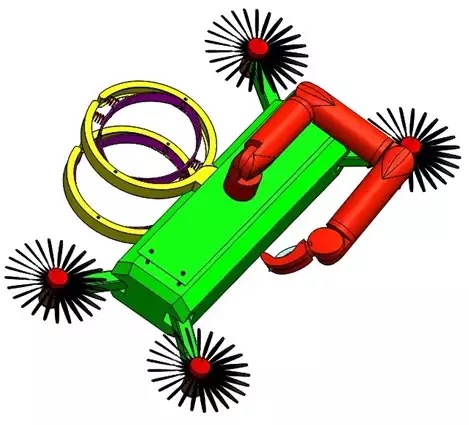
A modified drone design is about to make the hard, dangerous work of harvesting coconuts a whole lot easier. At least for those who actually pick the delicious one-seeded drupes for a living.
‘Cocobot’ picking drone under development
Researchers in India’s Goa state believe they have licked the age old difficulties of plucking coconuts from the tops of dizzying palm trees. Experts at the Indian Council of Agricultural Research-Central Coast Research Institute and their partners at Goa University are filing a patent for a flying drone “cocobot” that will snip selected nuts on high. Once those fall to the ground, they can be snatched up and prepared for marketing.
The device is designed to not only spare traditional “pandeli” coconut pickers the toil of scaling trees or using extension devices to cut elevated fruit. It also removes the risk of plummeting nuts bopping them or others at work when they land. It also aims to cut costs by speeding up the entire harvesting process.
According to a report in The Times of India, the modified drone will be equipped with a set of grabbing arms that clutch and anchor itself to a spot on palm trees that pilots have selected using the video feed. A cutting appendage can then be extended to choose bunches of ripe coconuts for severing – all from a sufficiently safe distance to ensure no one gets beaned when they drop.

Coconut plucking drone to increase safety and profits
The gadget is designed to work its way through 12 to 15 palms per hour, which would mark a considerable efficiency increase over both manual harvesting and improvised drone and sluggish robotic methods currently used. But the economic advantages in the prototype becoming reality could be greater still by broadening crops palm farmers can grow.
For example, black pepper plants frequently wind their way up palm trunks in the region, either naturally or intentionally encouraged by farmers. Yet coconut harvesters tend to steer clear of those dual crop jobs – or attack them in separate steps with different equipment.
“Padelis generally avoid coconut-black pepper systems due to difficulties in climbing the coconut trees on which the pepper plants climb,” Goa University professor Rajendra Gad told The Times. “Also, manned and unmanned devices presently being used for harvesting coconuts are not compatible with the dual cropping system. Fly cocobot, on the other hand, is an excellent solution.”
Gad adds that, once produced and operational, the drone could also be used on other species like areca nut, palmyra, date, and oil palm trees grown in India and around the world. The design craft has already won research and innovation awards, as well as plaudits from regional palm farmers. Now all that’s needed is the partners to get the craft aloft for the entire world to become a coco-paradise.
Illustrations: ICAR-CCARI/Goa University
FTC: We use income earning auto affiliate links. More.




Comments